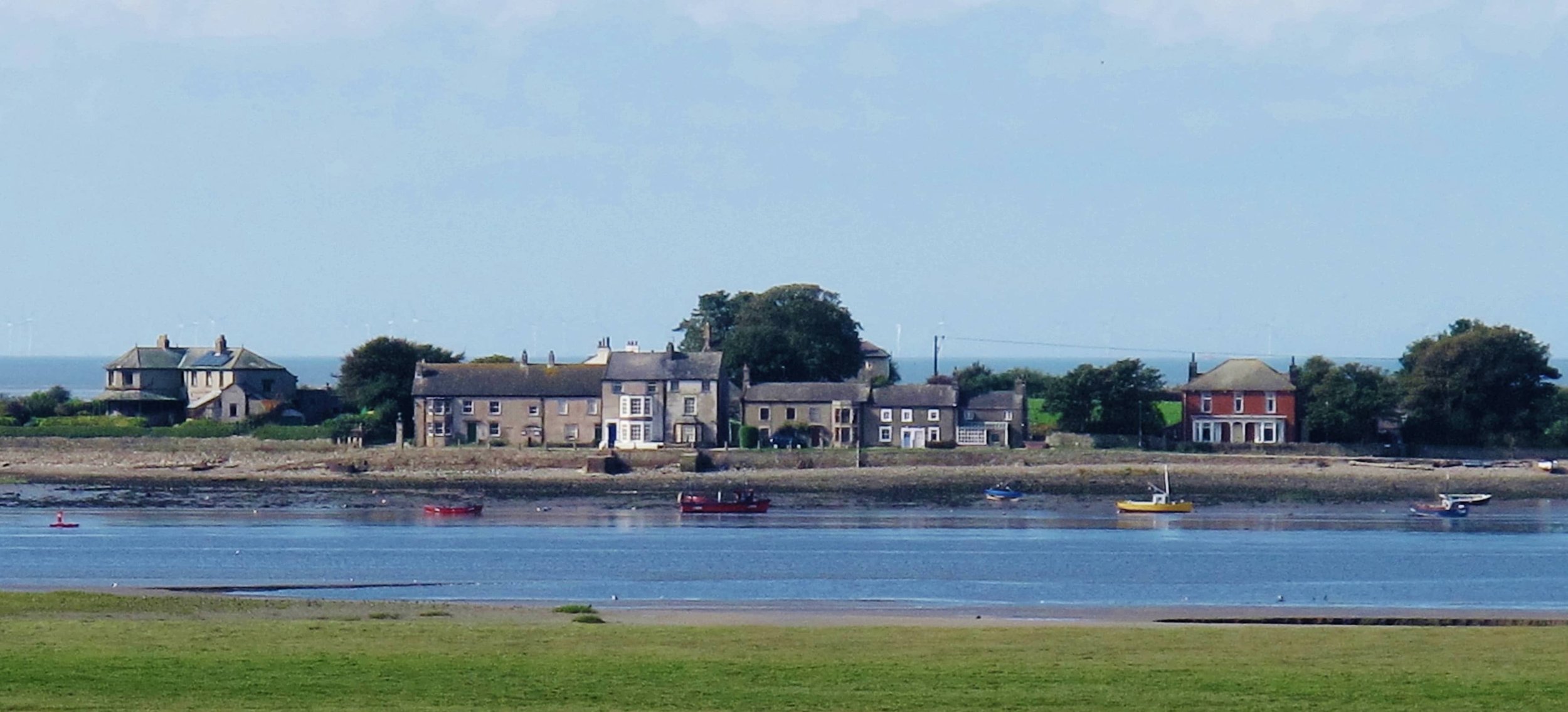
Buildings
A Conservation Area.
All the buildings at Sunderland Point fall within a conservation area (area ringed and shade red on map). There is also a high density of properties listed Grade 2 for their historic interest.
The building of the port and its facilities date from a period (almost certainly) between 1680 and 1740. They were mainly constructed to accommodate the rapidly growing colonial trade, with warehousing, a custom house, a block maker shop and an anchor smithy. Also founded at this time was the Ship Inn with its adjacent brew house to supply essential beer for onshore workers and seafaring mariners.
Sunderland Point Conservation Area and Grade 2 listed buildings
Over time the properties were firstly adapted to reflect Sunderland Point as a resort with warehouses becoming summer residences and one transformed into a hotel.
Now they have all become private residences. A handful of new houses were built in the late 19th century and early 20th century. In 1894 Sunderland point opened its own Mission Church. The last house built on the Point dates in origin from 1927.
-
First Terrace
On this terrace with the old wharf in front, the buildings had a varied mix of original uses. What was the Ship Inn sits on the corner with The Lane, further along has been warehousing, a general smithy, a custom house, the anchor smithy, the block and tackle maker and a ropewalk. Here too are cottages for fishermen and farm labourers. Number 7 was once three cottages converted into a single dwelling in 1847. It has been suggested a smithy once operated to the rear of this house.
-

The Lane
At the top of The Lane is the ‘Summer House’, originally built in around 1720 as a lookout for merchants and pilots anxiously awaiting the return of ships. A weathervane linked to a compass was built into the apex of the house to indicate the wind direction (and a wine cellar in the basement!). At the bottom of the Lane is Upsteps Cottage, once the brew house to the Ship Inn and it is here that Sambo is said to have died. Also, in the lower half of the cottage a bathhouse with facilities for hot and cold sea water showers was established in the 1820’s.
On the opposite side stands Dolphin House built for the artist Philip T. Gilchrist in 1913
-

Second Terrace
Almost all of Second Terrace was originally warehousing. There are three exceptions, the ‘Big House’ (where the Reading Room now is), a grand residence built for Joshua Lawson dated to 1715. Cotton Tree Cottage built for Captain Thomas Weeton and his wife Mary Rawlinson. The house has stone dating 1751. Also, in the converted Cotton Tree Barn, there is a stone dating a property to 1707.
The narrow ‘Multum in Parvo’ was built to fill in a gap between two warehouses.
One of the warehouses (now number 14) was converted into a licensed hotel in about 1810. It had several name changes and was known for many years as the Maxwell Arms. In the 1860s the sale of alcohol licenses were revoked for both the Maxwell Arms and the Ship Inn.

